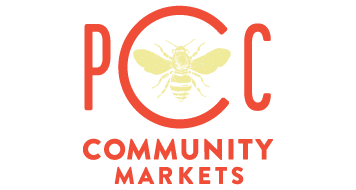Prop 65 Labels: How California’s Law Affects Everyday Products

The alarming label appears on countless products: “WARNING: This product contains chemicals known to the State of California to cause cancer, birth anomalies, or other reproductive harm.”
The warning, commonly referred to as a “Prop 65” label, stems from a 39-year-old consumer protection law in California. Over the decades, Prop 65 warnings have caused a lot of good nationwide — but also a lot of fear, confusion and unintended consequences.
Rebecca Robinson, PCC’s quality standards manager, and Steven Yeager, vice president of quality and regulatory for Oregon-based Mountain Rose Herbs, recently spoke about the label’s impacts through the Provender Alliance, a nonprofit trade organization for natural products businesses.
What is Proposition 65?
Proposition 65, formally known as the Safe Drinking Water and Toxic Enforcement Act, was a California state ballot initiative approved by voters in 1986.
“It’s what’s called a right-to-know law,” Robinson told the Provender online audience. Prop 65 was designed to protect California’s drinking water from being contaminated with chemicals known to cause cancer, birth defects, or reproductive harm.
What it’s mainly known for now, though, are the warning labels on countless products — frequently not just those sold in California, but nationwide. California maintains an ongoing list for chemicals through the state Office of Environmental Health Hazards that trigger the requirement for a warning label. It includes more than 800 substances, Robinson noted — including phthalates, pesticides, dyes, solvents, and more, plus naturally occurring heavy metals such as lead and arsenic.
“I think we all would agree here that most of those chemicals legitimately should be on that list and so Prop 65 is doing a lot of good,” Yeager said. However, its evolution over the decades has also created unexpected repercussions that don’t serve its original goals.
The benefits of Prop 65
On the positive side, Proposition 65 has raised awareness around toxic chemical exposure. It’s also prompted real change: A number of studies have shown companies reformulated products as a result of the initiative, Robinson said. California provided reports for many years on enforcement and penalties, and has an ongoing list online.
Robinson noted, though, that reformulated products aren’t automatically safer. “Sometimes they just choose a different chemical in the same class that can have the same risks associated with it (but isn’t on the list),” she said. “But it is a step in the right direction, getting companies to think about these things.”
Bisphenol-A (BPA), for instance, was once ubiquitous in canned foods, but alarms sounded in the late 1990s about BPA leaching from cans into foods, potentially acting as an endocrine disruptor. Companies reformulated their products quickly — but many initially just switched to alternates that had similar health risks, and then others with unknown formulations.
There’s cause for hope, though, even if the warning label isn’t perfect: Various tests over the years have shown levels of several toxic chemicals have dropped in human blood samples nationwide. While Proposition 65 almost certainly isn’t the sole cause of that drop, studies suggest it’s highly likely it contributed.
Issues with the Prop 65 label
Another one of the challenges with Prop 65 is overuse of the warning label.
Because enforcement is open not only to California’s Attorney General but to any California citizen, compliance has become fertile ground for lawsuits. Former governor Jerry Brown once called out “frivolous shakedown lawsuits” related to the law, signing a bill in 2013 intended to protect manufacturers from them, but issues still remain.
Given the legal risk, “There’s no downside to putting the label on, except for potential loss of sales,” Robinson said. When companies use the label regardless of whether their products really contain problematic substances, the warning gets watered down. “People start ignoring it, because they see it everywhere, and then it becomes a little bit meaningless.”
A more fundamental problem is confusion. Prop 65 labels alert people that they might be exposed to a harmful chemical, but doesn’t provide specifics or tools to evaluate their risk. As Ars Technica recounted, coffee was required to carry a Proposition 65 label for many years until the state carved out an exemption for it. Acrylamide, the extraordinarily common compound created by browning foods, required warning labels on products like fried potatoes until a recent court ruling in May 2025 said the label should not apply to the dietary version of the chemical.
While the landmark law has legitimately protected many, it can also frighten consumers without particularly helping them.
It lets them know their potential exposure to a toxic material — but it doesn’t help them know their true exposure, how much exposure could lead to a health issue, and the actual risk overall for experiencing a related negative health outcome. The label tells consumers about that specific product, but most won’t have relevant insights such as where else they may be exposed to that same chemical and how much that cumulative exposure is putting them individually at risk.
“Let’s say a shopper in Washington state chooses not to buy an organic potato chip that has really clean ingredients because there’s a Prop 65 warning on it,” Robinson said. Assume it’s from a smaller company without massive resources.
“And so they buy this other conventional potato chip (from a large corporate brand) that doesn’t have the warning label. That one has a bunch of extra additives in it. It’s made from conventional potatoes that were grown with pesticides, maybe.” And the kicker — it might contain the same ingredients that prompted the label on the organic chip.
That twist happens when a small company puts the Prop 65 warning label on every bag it produces nationwide, because it can’t afford or arrange separate packaging lines for products sold inside and outside California. A larger company might have the resources for California-only packaging carrying the warning label and non-California packaging that doesn’t.
“A more comprehensive federal law would serve the public better,” Robinson said — not just for Prop 65, but for other state-specific labeling requirements.
Heavy metals and Proposition 65
Another challenge, from a manufacturer’s perspective, is the labeling requirements for heavy metals. Products like lead and arsenic have well-documented dangers, and industrial contamination has led to tragic consequences.
A trickier twist, though, is that some products also contain metals that have leached into them from the soils where they were grown rather than from outside contamination. Arsenic and lead are naturally present to some degree in soils and water, and may also have higher levels from past industrial contamination.
Tiny amounts of the metals trigger the Prop 65 warning — understandable, Yeager said — and yet few natural botanical products could guarantee they are free of all trace elements. “I hate to say it, but we all ate a little lead today. It’s just a fact. Is it naturally occurring or not naturally occurring? Well, that’s something you could figure out or try to prove, but it’s difficult.”
Robinson noted another confounding factor: Sometimes products contain these naturally occurring substances but they may not be a notable source of exposure because they are not in a “bioavailable” form that can be absorbed by the body. Prop 65 does not consider such nuances.
Why does PCC carry products with a Proposition 65 label?
Customers frequently reach out to producers and retailers with alarmed questions about the warning labels.
Shoppers sometimes return items after seeing the label, Robinson said — especially if it’s on a product that’s also certified organic.
“Organic, regenerative, sustainable farming methods can’t guarantee that these products are free of these big global environmental pollutants,” she said. “Organic is great in so many ways, but it doesn’t solve for everything.” These issues are being discussed in the organic community, with many people and organizations advocating for improvements to federal organic regulations to require testing and remediation protocols for environmental contaminants like heavy metals and per- and polyfluoroalkyl substances (PFAS).
As a retailer with strong quality standards, she said, some customers don’t understand why the co-op carries any products displaying a Prop 65 label. But “given the complexities around it, I don’t think that using that warning label as a screening tool makes sense,” she said.
For people with concerns about the substances, she says it’s good to make an informed decision about purchases – but also to get involved in policy. “We need collaboration among governments and nonprofits and retailers. Everybody in the system needs to be part of the solution, simply going after one part of it isn’t as helpful.”
Click here for a current list of substances covered under the Proposition 65 label.
